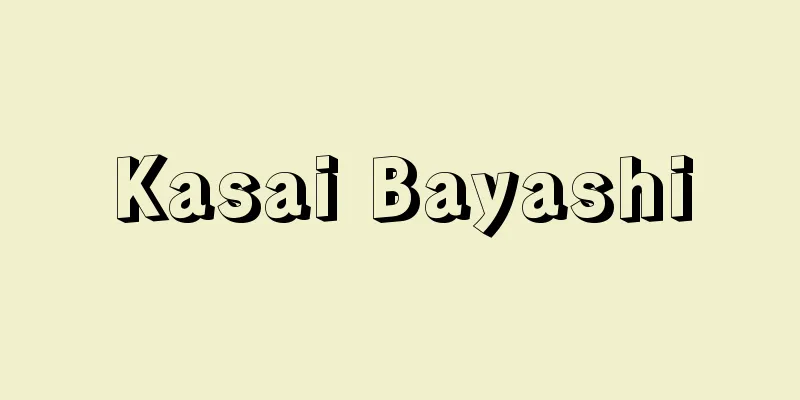Transferable security - Jototanpo

|
A security where the ownership of the item used as collateral is transferred to the creditor, and the item is returned if the payment is made within a certain period of time. Under the Civil Code, only a system of limited real rights (pledges and mortgages) is recognized as security without transferring the ownership of the item, but because this is inconvenient, this system has gradually developed in the trading world and has been recognized in case law. For example, a factory owner who wants to obtain 10 million yen in funds would enter into a consumer loan contract for 10 million yen, and at the same time, transfer the factory's machinery to the creditor as collateral, borrow it free of charge, and promise to return the ownership of the machinery if the payment is made within a certain period of time (this is essentially the same as a "sale security," where the collateral is sold, the necessary funds are raised in the form of the sale proceeds, and the item is repurchased at a later date). The object of the security can be real estate or rights such as telephone subscription rights, but the greatest advantage of this system is that movable property can be kept as security (in the pawn system, the object must be handed over to the creditor). In the past, the formality of the transfer of ownership was emphasized in the case of transfer of ownership, and it was treated as a true transfer of ownership between the debtor and the creditor, although there was a restriction that it was for the purpose of security. For example, if the creditor transferred it to a third party, the ownership of the object was completely reverted to the third party. However, since provisional registration security, which was customarily used as a type of security that transfers ownership like transfer security, came to be treated as a type of security right through precedent and legislation (the "Law on Provisional Registration Security Contracts" of 1978), precedents have come to emphasize the substance of the purpose of security rather than the formality of the transfer of ownership, and to treat transfer security as close as possible to a security right as a limited real right. What has changed significantly in this regard is the power of the creditor when the debtor does not repay the debt at the due date. In the past, there were two types of rights of the creditor: one in which the subject matter ultimately becomes the creditor's property, as in a foreclosure contract, and there is no need for any liquidation, and the other in which the subject matter is converted into money or appraised and the remaining amount, if any, is returned to the debtor, and it was considered that which of these cases would be decided by the will of the contracting parties, but currently, case law has made it clear that the creditor has an obligation to liquidate, even if there is a special clause similar to a foreclosure contract. This is because, from the viewpoint of the purpose of security, that is sufficient. [Yasuyuki Takahashi] Source: Shogakukan Encyclopedia Nipponica About Encyclopedia Nipponica Information | Legend |
|
担保となる物の所有権自体を債権者に譲渡し、一定の期間内に弁済すればこれを返還させるという担保。民法では、物の所有権は移さずにこれを担保とする制限物権としての担保の制度(質・抵当)しか認められていないが、それだけでは不便なので取引界でしだいに発達し、判例法上認められてきた制度である。たとえば、1000万円の資金を得たいと思う工場経営者が、1000万円の消費貸借契約を結ぶと同時に、工場の機械をその担保のために債権者に譲渡し、それを無償で借り、一定期間内に弁済すれば機械の所有権を返還してもらう約束をするという形(担保の目的物を売却し、必要な資金を売却代金という形で調達し、後日この目的物を買い戻すという「売渡担保」も、実質的にはこれと同じ)で行われる。 担保の目的物は不動産や、電話加入権のような権利でもよいが、動産を引き続き手元に置いたまま担保にできる点にこの制度の最大の利点がある(質の制度では、物を債権者に渡さねばならない)。かつて譲渡担保は、所有権を譲渡するという形式が重視され、債務者と債権者の間では、担保の目的でという制限はつくものの、真に所有権の移転が行われるものとして処理されており、たとえば、債権者がこれを第三者に譲渡すれば、その物の所有権は完全に第三者に帰属すると解されていた。ところが、譲渡担保と同じく所有権移転型の担保として慣行上行われてきた仮登記担保が、判例・立法(昭和53年「仮登記担保契約に関する法律」)によって一種の担保権として扱われるようになってから、判例は、譲渡担保についても、所有権移転という形式よりは担保目的という実質を重視し、できるだけ制限物権としての担保権に近い取扱いをするようになってきた。その点で大きく変わってきたのは、債務者が弁済期に債務の弁済をしない場合の債権者の権能である。かつては、債権者の権能には、流質契約と同じように目的物は終局的に債権者の所有となってなんら清算の必要のない場合と、目的物を換価または評価し残額があれば債務者に返還する場合との2種があり、そのどちらであるかは契約当事者の意思によって決まるとされていたが、現在では、たとえ流質契約類似の特約があっても、債権者には清算義務があることが判例によって明示されている。担保という目的からすれば、それで十分だからである。 [高橋康之] 出典 小学館 日本大百科全書(ニッポニカ)日本大百科全書(ニッポニカ)について 情報 | 凡例 |
>>: Jodo Shinshu - Jodo Shinshu
Recommend
Toyosaka [town] - Toyosaka
A former town in Kamo District, central Hiroshima ...
Pachyrrhynchus
...An insect of the Curculionidae family in the C...
Kanchi - Kanchi
Please see the "Kanchipuram" page. Sour...
Hippocampus coronatus (English spelling) Hippocampuscoronatus
…[Isao Hanyu]. … *Some of the terminology that me...
Magnetronic reservoir system
...So, in the 1950s, new technologies were being ...
South-Eastern Asia
… However, the term South-East Asia was not unhea...
Echapée - Echapée
…(5) Anticipation: This is the case when the harm...
Setouchi [town] - Setouchi
The town is located in Oshima District, Kagoshima ...
Sabina virginiana (English spelling)
… [Toshio Hamatani]. … *Some of the terminology t...
Two-port circuit - にたんしたいかいろ (English spelling) two port circuit
When focusing on four nodes in an electric circuit...
Qutlugh Boyla (English spelling) Qutlugh Boyla
…However, the Tenguri Khan, who took the throne o...
fluorescent dye
…It is also called a fluorescent bleaching agent ...
Numazu Domain
This was a domain that ruled the Numazu region of...
Sanma - pacific saury
A colloquial term referring to the close aides inv...
Goguryeo
The name of an ancient Korean country (c. 37 BC -...









